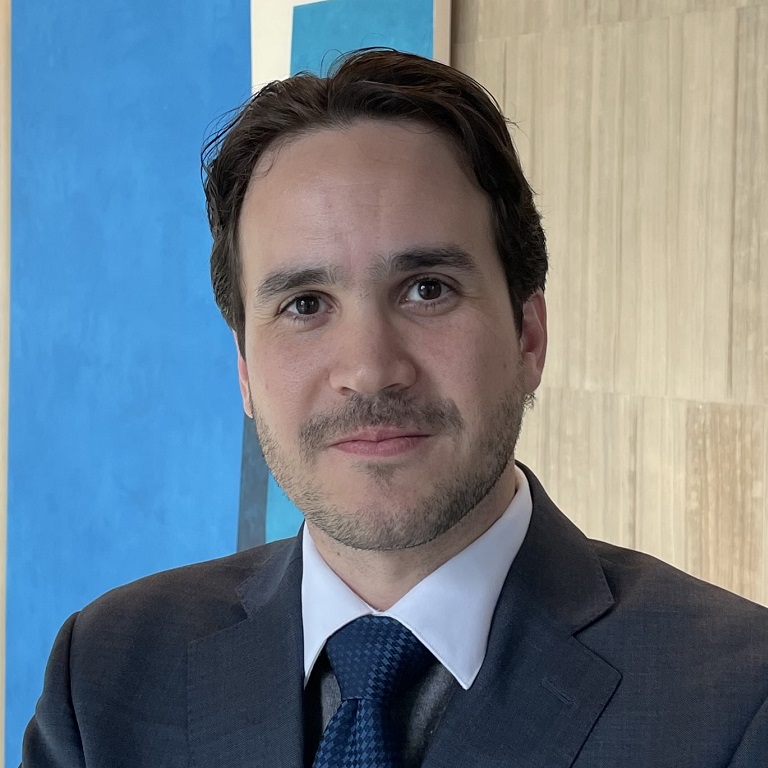
Adam Davey
Client Executive, UK
-
United Kingdom
As infrastructure projects continue to escalate in scale, cost, and complexity, key project stakeholders are increasingly concerned with the insurance coverage obtained for their capital projects.
Insurers, too, are confronted by the rising cost of capital and aggregation challenges associated with large-scale construction projects, making it more difficult for them to allocate funds to cover potential losses. In response, they are taking actions to mitigate their risks, including offering higher premiums and reduced coverage options, as well as being more selective in the projects they choose to underwrite.
One way project stakeholders can better position themselves to have their desired insurance in place in this challenging environment is by having a probable maximum loss (PML) study – a report that estimates the magnitude of loss in a severe loss scenario – conducted. Equipped with the potential loss metric and scenario evaluation a PML provides, project stakeholders can better understand their project’s actual exposures to aim to purchase their desired level of insurance.
This article explores the ways in which loss estimations, and PML studies in particular, are useful for key project stakeholders, including giving them the ability to measure the likely financial impact of potential insurable losses, make more informed decisions around insurance strategy, and protect the long-term success of their capital investment.
While 10 years ago megaprojects valued over US$1 billion were uncommon, in today’s environment, many megaprojects now exceed that figure easily. Several factors are responsible for increasing construction costs.
Cumulatively, these conditions are making it more difficult for megaproject owners to access the desired coverage for their new projects. As project values exceed US$2 billion, securing limits up to those values may require several insurers or may not be possible with traditional risk transfer methods. With multiple insurers and geographies on the project coupled with more stringent insurer guidelines, obtaining consistent terms and conditions becomes very challenging, with split rating and differing terms and conditions common in those circumstances. The consequences of not being able to obtain the desired insurance for a project could lead to project delays or potentially large exposures for project stakeholders.
Loss estimates provide insurers with a reference value for a loss they could be exposed to at a specific site under defined conditions. They consider these values to be important metrics for evaluating the risk associated with underwriting a construction insurance policy as well as for setting its premium and conditions.
Insurance companies use a range of data sets to inform their various loss estimates. Their methods for estimating losses are usually similar in nature, but they may define terms differently and use the same initials for different phrases. Below is a compilation of some of the most commonly used terms in the market:
The figure shown above is an illustration of a potential distribution of loss estimate definitions contrasted by protection systems assumptions, severity, and potential occurrence. While insurers may underwrite to different assumptions from one another, each level will provide valuable information for a specific use. PMLs have been the most frequent and relevant metric considered by insurance companies when assessing large civil construction projects.
A PML is defined as a financial estimate of the largest physical loss reasonably expected after a single event. Such events may include natural disasters or structural incidents like fire, flood, sediment, and collapse. Most estimates factor in property value, as well as unique risk factors like location, building materials, soil conditions, and existing loss control measures.
Beyond direct physical damage losses, PML values typically also incorporate time elements and indirect costs, such as expediting expenses, continuing expenses, and project management costs. They could also consider delay in start-up and business interruption expenses. They are usually expressed as a dollar value, but they can also be a percentage of the total value of a property.
PML and MFL studies are commonly used by property risk engineers and insurance underwriters, and both estimate a maximum physical damage loss that could be sustained due to any one occurrence considered to be within the realm of probability. However, these studies differ from each other based on severity and likelihood. While PML studies typically assume mitigating factors will be partially impaired or delayed, MFL studies go a step further, assuming that any safeguards in place will fail to offer protection. For this reason, an MFL study tends to provide a much higher loss expectancy that accounts for more significant financial losses.
For megaproject stakeholders, a PML study is a critical starting point for increasing their understanding of a probable exposure and informing appropriate insurance strategies. Most construction insurers see PMLs as sufficient for satisfying their internal parameters for identifying and quantifying potential exposure.
If a stakeholder is interested in taking a more conservative approach, knowing the MFL may be valuable. However, the usefulness of a MFL study can vary. In some cases, MFL studies will produce numbers very close to the total insurable value of the asset. Definitions of the worst-case scenario that triggers the MFL can be subjective and can include highly unlikely events or combinations of multiple severe events.
When a project owner, through its broker of record, first approaches an insurer regarding coverage for large projects, the insurer will often require key information to better understand potential risks and losses associated with the project. Insurers will conduct their own PML study, calculate potential losses, and relay the information to the project owner.
These assessments tend to be conservative in nature, and insurers often perform these analyses with limited or incomplete information, which can result in an opinion designed to be protective of the insurer. In addition, the project owner may have limited understanding of how the insurer arrived at that number or what assumptions the insurer used to calculate it. The insurer’s PML value is sometimes communicated simply as a dollar figure without explanation.
In today’s insurance market, where capacity for underwriting megaprojects is limited, finding two or three insurers to insure a megaproject with values and limits in excess of US$2 billion may prove challenging. Each insurer will undertake its own PML, which in turns dictates its capacity levels as well as terms and conditions.
Further, insurers may not be able to insure the full estimated project reinstatement value. Instead, they may propose setting a first loss limit – a lower value meant to cover the total property values actually exposed to damage in a single loss occurrence. This amount would be the extent of the insurers’ coverage obligations.
PML studies are one of the major inputs that help determine an appropriate first loss limit. Just like with the studies themselves, insurers may provide little insight into how they decided on this value. Project owners may unintentionally be operating outside their risk appetite.
To solve this multi-layered issue, project stakeholders should consider having a PML study conducted by a qualified risk advisory team. These studies provide project owners, developers, and contractors with financial loss estimates that are much more detailed than insurers typically supply. With a thorough, unbiased study, stakeholders can approach insurers with a better understanding of their potential losses and desired limits before exploring their coverage options.
These studies can provide comfort to project stakeholders that if a first loss limit policy is needed due to market constraints, is supported by a thorough study. Further, by establishing a first loss limit, multiple insurers may participate on somewhat more attractive terms, as it is less likely to push them beyond their comfort levels or capacity.
A PML study enables project owners to communicate a clear and targeted message to the insurance market regarding the risks associated with their capital project. It can provide a benchmark for which owners can plan on buying coverage up to in terms of value. Additionally, it can be used as a negotiating tool in the event the insurer completes a PML that produces a different result.
A PML study conducted by qualified risk advisors provides potential benefits outside of insurance as well. These may include:
An effective PML study is a critical stepping stone to securing coverage for megaprojects as a project owner. As construction projects continue to grow in scale and complexity, it will remain important for project owners to evaluate their risk profile, and for insurers to understand the risks they are taking on.
By including a detailed PML study in their submission package, project stakeholders can differentiate from other insureds by demonstrating risk quality to insurers. While insurers may still choose to have their own PML studies conducted, providing a PML study may help project stakeholders attract capacity and achieve better terms.
Marsh Advisory delivers a systematic and precise approach to PML studies for construction projects. Our team of property and strategic risk consulting specialists includes experts on fire protection, global complex projects, project delivery, and project and construction management to support developers and promote the resilience of their projects.
Due to our decades of experience working on global mega projects, we are uniquely positioned to help you navigate risk, protect your business against potential losses, and secure desired coverage. By providing project owners, developers, and contractors with detailed financial loss estimates efficiently, our team can help effectively tailor the message to the insurance market.
To learn more, speak with your Marsh representative.

Client Executive, UK
United Kingdom

Senior Vice President, National Construction and Surety Practice
Canada

Managing Director, US Project Risk Leader
United States

Managing Director, Construction Practice Leader, IMEA
United Arab Emirates

Vice President, Construction and Infrastructure Leader, Perú
Peru

Senior Vice President, Construction Consulting Services, Marsh Advisory
Canada

Head of Construction, Pacific
Australia

Managing Director for Construction, Continental Europe
France

Chief Client Officer, Construction, Asia
Hong Kong